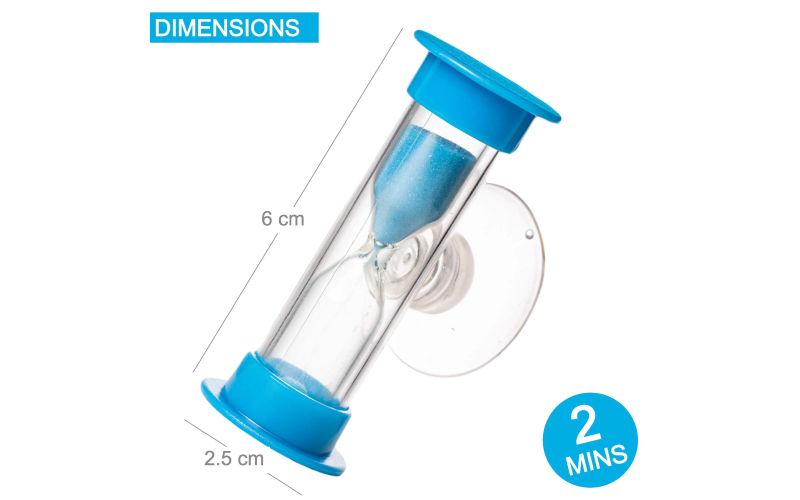Visual timers play a crucial role in managing screen time and daily tasks for children. With the increasing prevalence of digital devices, setting limits on screen time has become a significant challenge for many parents. visual timer for kids offer a practical solution by providing a tangible, visual representation of the time allotted for screen use. For instance, a visual timer might use a color-coded display to show how much time is left before a screen break is needed. This helps children understand and adhere to time limits more effectively than abstract numerical timers. Moreover, visual timers can be used to structure daily routines, such as brushing teeth or completing chores.
Top Benefits of Using a Visual Timer for Kids in Daily Routines
Using a visual timer for kids in daily routines offers numerous benefits. Firstly, it provides a clear and engaging way for children to track time, which can be especially helpful for those with difficulties in understanding abstract concepts. By using visual cues, such as changing color or shrinking pie charts, children can see how much time they have left for a specific activity. This can reduce anxiety about time and help them stay on task. Additionally, visual timers can foster independence by allowing children to manage their own time with minimal adult intervention. This not only empowers them but also builds their time management skills, which are essential for their academic and personal development. Moreover, visual timers can improve transitions between activities by offering a structured approach to managing time, which can be particularly useful in a busy household.

How a Visual Timer for Kids Can Transform Homework and Study Sessions?
A visual timer for kids can significantly transform homework and study sessions by making time management more effective and less stressful. When children use a visual timer, they can see the passage of time more intuitively and less abstractly. For example, a visual timer might show a red-to-green gradient to indicate how much time is left for studying. This visual representation can help children stay focused and motivated by providing a clear endpoint for each study session. Additionally, visual timers can be used to break homework into manageable segments, making tasks feel less overwhelming and more achievable. By incorporating regular breaks, as indicated by the timer, children can avoid burnout and maintain better concentration. Overall, visual timers can enhance the efficiency and effectiveness of study sessions, leading to improved academic performance and a more positive learning experience.
Choosing the Right Visual Timer for Kids: What Parents Should Know?
Choosing the right visual timer for kids involves considering several factors to ensure it meets the child’s needs and preferences. Parents should look for a timer that offers clear visual cues, such as color changes or moving segments, to help the child easily understand the passage of time. The timer should also be durable and easy to use, with intuitive controls that allow for quick adjustments. Size and portability are important as well, especially if the timer will be used in different settings, such as at home or school. Additionally, parents should consider features like sound options and adjustable time settings to accommodate various activities and needs. By selecting a timer that aligns with their child’s specific requirements, parents can maximize the benefits of using a visual timer for managing time effectively.
The Impact of a Visual Timer for Kids on Effective Learning and Development
The impact of a visual timer for kids on effective learning and development is substantial. By providing a visual representation of time, these timers help children develop a better understanding of time management, which is crucial for their academic success and personal growth. Visual timers can enhance focus and concentration by clearly defining the duration of study sessions and breaks, which helps children stay engaged and avoid distractions. Moreover, they support the development of executive functioning skills, such as planning, organization, and self-regulation. As children learn to manage their time effectively, they also gain confidence and independence, which contributes to their overall cognitive and emotional development.
Understanding the Features to Look for in a Visual Timer for Kids
When selecting a visual timer for kids, understanding the key features to look for can make a significant difference in its effectiveness. Key features include a clear and intuitive visual display that shows time remaining in a way that is easy for children to comprehend. The timer should also offer adjustable settings to accommodate various activities and time intervals. Durability is important, as the timer should withstand daily use and potential drops. Additionally, features such as audible alarms or vibration alerts can provide additional reminders and support. Ease of use is crucial, so the timer should have simple controls and instructions. Some timers also offer customizable settings, allowing parents to tailor the timer to their child’s specific needs and preferences.
How a Visual Timer for Kids Enhance Focus and Reduces Distractions?
A visual timer for kids enhances focus and reduces distractions by providing a clear and engaging way to manage time. When children can see a visual representation of how much time is left for an activity, they are less likely to become distracted or lose track of time. For example, a visual timer with a color-changing display can help children understand how much time remains and stay focused on their tasks. By setting specific time intervals for work and breaks, children can use the timer to structure their activities and maintain better concentration. The visual timer also helps children develop self-regulation skills, as they learn to manage their time and stay on task. Overall, the use of a visual timer can lead to improved focus, reduced procrastination, and a more productive and enjoyable learning experience.
Comparing Different Models: Which Visual Timer for Kids is Best for Your Child?
Comparing different models of visual timer for kids involves evaluating various factors to determine which timer best suits your child’s needs. Consider the type of visual display each timer uses, such as color-coded segments, digital screens, or analog dials, and how well it aligns with your child’s ability to interpret visual cues. Additionally, assess the timer’s features, such as adjustable time settings, durability, and ease of use. Some timers offer advanced features like programmable intervals or customizable displays, which can be beneficial for specific needs. Price is also a factor to consider, as there is a range of options available to fit different budgets. By comparing these aspects, you can select a visual timer that will effectively support your child’s time management and learning needs.
Conclusion
Visual timer for kids offer a valuable tool for managing time, enhancing focus, and improving daily routines. By providing a clear, visual representation of time, these timers help children understand and adhere to time limits more effectively than traditional numeric timers. They play a significant role in managing screen time, transforming homework and study sessions, and fostering independence and responsibility. When choosing a visual timer, it’s important to consider features such as display type, durability, and ease of use to find the best fit for your child. With the right visual timer, children can develop better time management skills, reduce distractions, and achieve a more productive and balanced daily routine.


